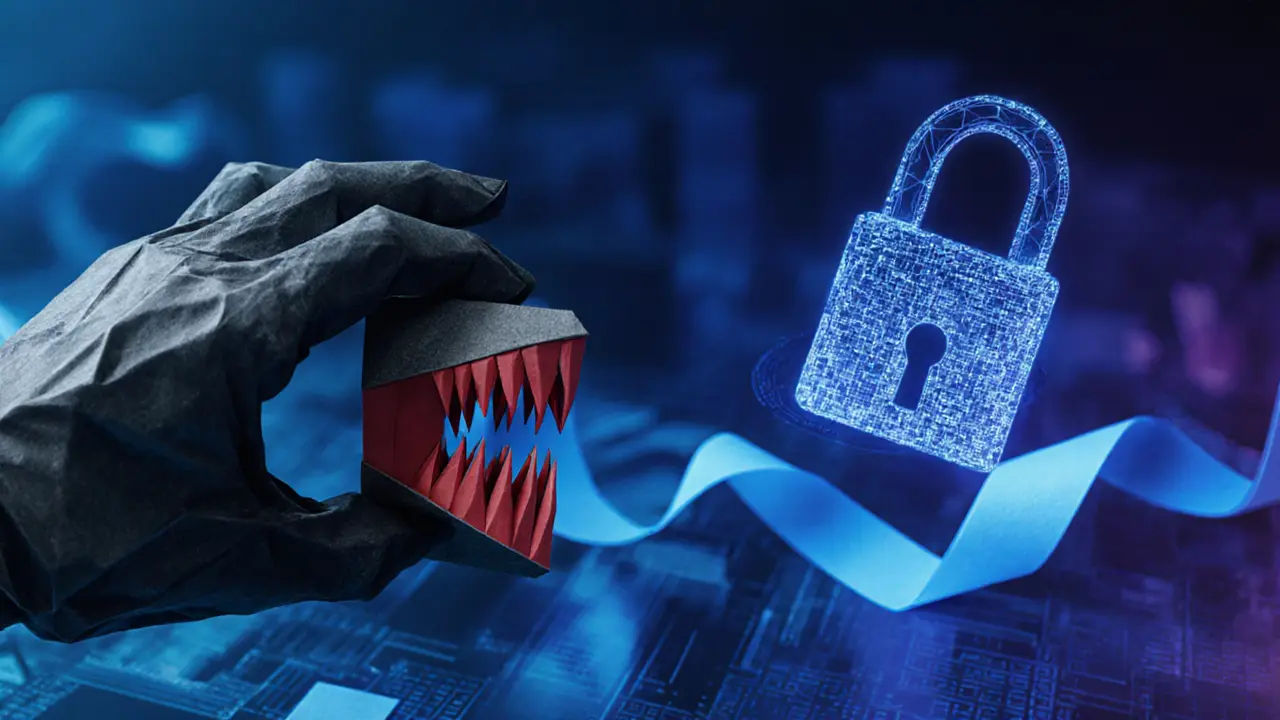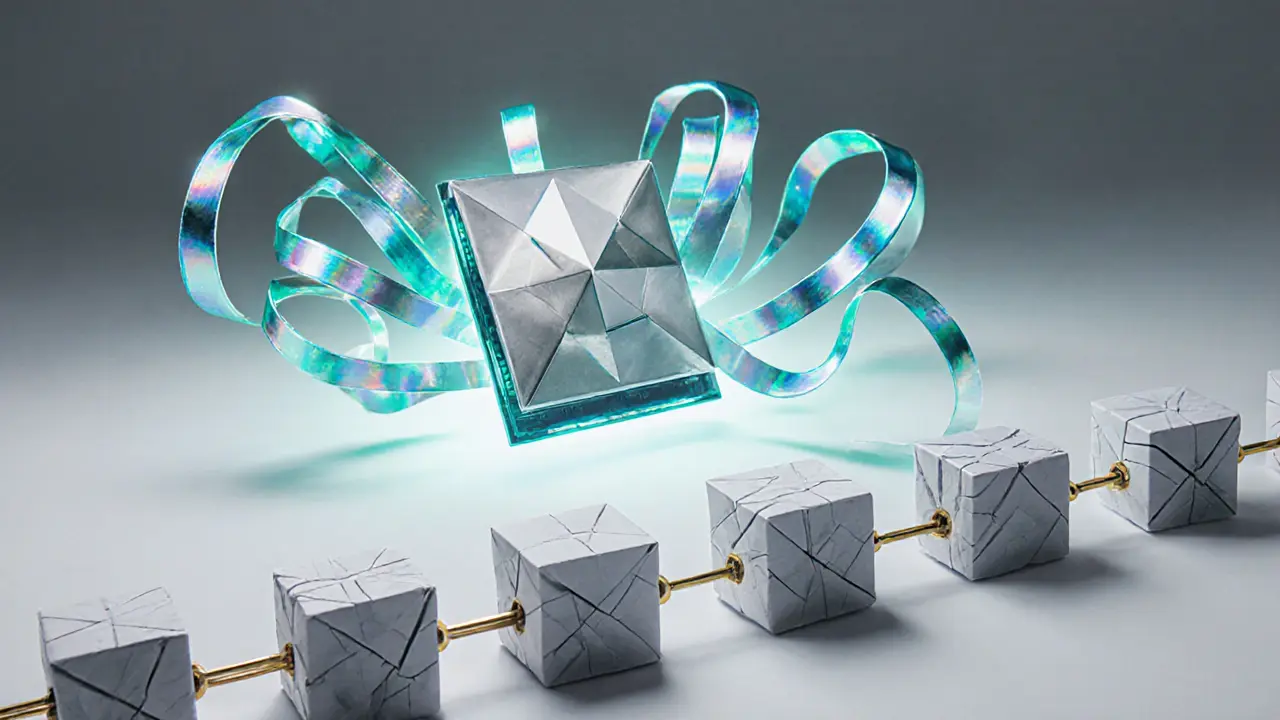Quantum Threat Calculator
Assess Your Quantum Risk
This tool estimates the quantum threat level to your blockchain assets based on current quantum computing capabilities and blockchain parameters.
Risk Assessment Results
Enter parameters and click "Calculate Risk Level" to see your quantum threat assessment.
Imagine a future where a single machine could rewrite the rules of digital money. Quantum computing promises that power, and it’s already forcing the blockchain world to rethink how it protects billions of dollars. This article breaks down the science, the current risk level, and the concrete steps developers and users can take right now.
TL;DR
- Quantum computers use Shor's algorithm to solve the math that secures Bitcoin, Ethereum and most cryptocurrencies.
- Today’s machines are far from breaking these locks, but a 13‑million‑qubit device could crack Bitcoin in minutes.
- Avoid re‑using addresses and adopt post‑quantum signatures (lattice‑based, hash‑based) to stay safe.
- Ethereum, Hyperledger and D‑Wave are already testing quantum‑resistant solutions.
- Plan for migration now; the threat window could close within the next decade.
Quantum Computing 101
At its core, Quantum Computing is a computing paradigm that leverages quantum bits (qubits) to perform many calculations at once. Unlike classical bits that are either 0 or 1, qubits can exist in superpositions of both states, enabling exponential speed‑ups for certain problems.
The most famous example is Shor's algorithm, which can factor large numbers and solve discrete‑logarithm problems in polynomial time-tasks that would take classical computers millions of years.
Why Blockchain Relies on Hard Math
Every blockchain transaction is secured through asymmetric cryptography. Two mathematical families dominate the space:
- RSA - security comes from the difficulty of prime factorization.
- Elliptic Curve Cryptography (ECC) - security rests on the elliptic‑curve discrete logarithm problem.
Public keys are posted on the ledger, while private keys stay secret. Classical computers can verify signatures but cannot reverse‑engineer the private key from the public key-unless a quantum machine runs Shor's algorithm.
The Direct Threat: Shor’s Algorithm on a Blockchain
When a quantum device can execute Shor’s algorithm with enough logical qubits, it can:
- Derive a private key from a public key in minutes.
- Forge a valid digital signature for any transaction.
- Spend or move funds that were thought to be immutable.
The critical moment arrives when the time to break a key is shorter than a blockchain’s typical confirmation window. Bitcoin, for example, confirms blocks roughly every 10 minutes. If a quantum computer can compute a private key in <10minutes, an attacker could sign a fraudulent transaction before the network finalizes the legitimate one.

How Close Are We? Current Quantum Capabilities vs. Break Requirements
Today’s most powerful machines, such as Google’s 105‑qubit Willow chip, are still experimental and lack error‑correction needed for reliable cryptanalysis. Research from Universal Quantum (2022) estimates the following thresholds:
| Target | Qubits Required | Estimated Time to Break | Current Status |
|---|---|---|---|
| RSA‑2048 | ~4,000 logical | ≈8hours | Not feasible today |
| ECC secp256k1 (Bitcoin) | ~1,500 logical | ≈30minutes | Far beyond today’s hardware |
| Full Bitcoin address set | ≈13million logical | ≈1day | Speculative future goal |
Even the most optimistic timelines place a functional, error‑corrected, million‑qubit machine at least 5‑10years away. That said, quantum progress follows an exponential curve much like early classical computers, so the window could shrink quickly.
Mitigation Strategies: From Immediate Practices to Long‑Term Crypto
Two layers of defense are recommended.
1. Operational Hygiene - Avoid Address Reuse
When you generate a fresh Bitcoin address for every payment, the public key stays hidden until the first spend. Unused addresses present no public key for a quantum computer to target, buying you time until quantum‑safe protocols roll out.
2. Post‑Quantum Cryptography (PQC)
The cryptographic community is converging on three families that resist both classical and quantum attacks:
- Lattice‑based algorithms (e.g., Kyber, Dilithium) - rely on shortest‑vector problems that remain hard for quantum machines.
- Hash‑based signatures (e.g., XMSS, LMS) - use one‑time signatures derived from hash functions.
- Multivariate cryptography - based on solving systems of multivariate quadratic equations.
Migration paths involve updating wallet software, consensus rules, and possibly creating “dual‑sign” transactions that carry both a classic and a quantum‑safe signature until the network fully switches.
Industry Response: Experiments, Standards, and Early Deployments
Major blockchain projects are already preparing.
- Ethereum - research teams are testing lattice‑based key exchange in testnets and contributing to the NIST PQC standardization process.
- Hyperledger - the open‑source consortium has a dedicated “Quantum‑Safe” working group that drafts guidelines for enterprise DLT.
- D‑Wave - in 2024 the company ran a proof‑of‑concept blockchain across four quantum annealers, showing that quantum hardware can handle hashing and consensus while consuming far less power.
These efforts share a common goal: build a migration path that preserves backward compatibility, so existing assets stay usable while newer, quantum‑resistant features are rolled out.
Timeline & What to Do Right Now
Based on current roadmaps, here’s a realistic sequence:
- 2025‑2026: Adopt address‑reuse avoidance in wallets; start integrating experimental PQC libraries.
- 2027‑2029: Major testnets (Ethereum, Hyperledger) run dual‑signature transactions; community consensus on a PQC algorithm (likely Kyber for key exchange, Dilithium for signatures).
- 2030‑2032: Hard fork to replace ECC with lattice‑based keys across major public chains.
- Beyond 2032: Quantum computers reaching >1million logical qubits could threaten any legacy network that hasn’t migrated.
In practice, the safest immediate steps are:
- Never reuse a cryptocurrency address.
- Upgrade to wallet software that supports “quantum‑ready” key generation (many open‑source wallets already have this option turned off by default).
- Follow project roadmaps (Ethereum’s “Quantum‑Ready” EIPs, Hyperledger’s standards drafts) and vote for upgrades when they appear.
Beyond Crypto: The Wider Digital Landscape
The same math underpins TLS, email S/MIME, code‑signing certificates, and even IoT firmware updates. A successful quantum attack on one blockchain could cascade into broader trust failures, especially for centralized services that still rely on RSA‑2048 or ECC‑P‑256. That’s why governments and standards bodies (NIST, ISO) are fast‑tracking post‑quantum standards-the goal is a universal upgrade, not just a crypto‑centric one.

Frequently Asked Questions
How soon could a quantum computer actually steal Bitcoin?
Current hardware is nowhere near the millions of logical qubits needed. Most experts predict a realistic threat window between 2030 and 2035, assuming exponential growth continues. Until then, proper address hygiene and early PQC adoption keep assets safe.
What is the "harvest‑now, decrypt‑later" attack?
Adversaries record encrypted blockchain data today, waiting for a future quantum computer to break the underlying keys. Because blockchain transactions are immutable, the recorded data remains usable forever, making early mitigation essential.
Are there any blockchains already using quantum‑resistant algorithms?
A few experimental networks (e.g., QRL - Quantum Resistant Ledger) run hash‑based signatures by design. Mainstream chains like Ethereum and Hyperledger are still on classic ECC but have clear migration plans.
Do I need special hardware to generate post‑quantum keys?
No. Most post‑quantum key generation can be done in software on standard CPUs. Some high‑performance libraries use SIMD instructions for speed, but there’s no need for a quantum computer.
Will quantum computers make all existing cryptocurrencies worthless?
Not if the ecosystem transitions in time. A coordinated upgrade to quantum‑safe signatures maintains the integrity of the ledger. Assets would retain value as long as the network’s consensus rules stay secure.





Marie Salcedo
Great overview, thanks for sharing!
Noel Lees
Wow, this quantum threat thing is blowing my mind, and I'm not just being dramatic here 😊. First off, the idea that a future machine could rip apart the security of Bitcoin is both terrifying and fascinating. If you've ever wondered why we keep hearing about Shor's algorithm, it's because it can factor huge numbers in a snap, something classical computers can't even dream of. The article nails the point that we don't have a 10‑million‑qubit beast today, but the trajectory looks steep. Every year, qubit counts double, and before we know it, those numbers will be in the billions. That means the window to act is narrower than we think, so start migrating now, not later. You should also stop re‑using addresses; it's a simple habit that will save you from future heartbreak. Post‑quantum signatures like lattice‑based schemes are already being prototyped, and they aren't as scary to implement as they sound. Don't be fooled into thinking it's a gimmick-governments are already drafting standards, so it's legit. The "harvest‑now, decrypt‑later" scenario is a real nightmare; attackers can sit on your blockchain data for years waiting for the right tech. That said, the community is moving fast, and open‑source wallets will soon roll out quantum‑ready options. A quick migration plan involves: audit your keys, generate new ones with PQC, and update your smart contracts accordingly. If you're an dev, start testing hash‑based signatures in your testnets. Remember, the blockchain's strength lies in consensus, and a coordinated upgrade can keep it solid. In short: act now, stay informed, and embrace the post‑quantum future 🙌.
Raphael Tomasetti
From a protocol standpoint, the asymptotic speedup of Shor's algorithm on a 1M‑qubit scale translates to sub‑minute key recovery for ECC‑P‑256, which is a non‑trivial risk vector.
Jenny Simpson
Oh please, another doomsday post about quantum computers stealing your crypto. As if we haven't seen that coming for a decade! The hype always outpaces the hardware, and these "13‑million‑qubit" fantasies are pure science‑fiction. Meanwhile, developers are busy fixing gas fees, not building quantum‑ready wallets. If you truly believe the apocalypse is near, you'd stop re‑using addresses today, not write a 2‑minute essay. Dramatic much?
Sabrina Qureshi
Wow!!! This article is absolutely mind‑blowing!!! The future of quantum computing & blockchain security is... sooo exciting!!!! I can’t wait to see what happens next!!!
Janelle Hansford
Hey folks! 🎉 If you’re looking to future‑proof your assets, start by generating fresh addresses for every transaction and explore wallets that already support post‑quantum algorithms. We’ve got a community thread brewing on best practices-join in and share your experiences!
dennis shiner
Oh yeah, because quantum computers are *right* around the corner, right? 🙄
Maggie Ruland
Sure, let’s all panic while the coffee brews.
Joyce Welu Johnson
Reading this gave me chills-imagine the chaos if someone cracked your private key tomorrow! But don’t lose hope; the open‑source community is already racing to implement lattice‑based signatures. Stay tuned and keep your wallets updated.
Ally Woods
Eh, look, I’m not gonna spend my weekend reading about quantum stuff. If you’ve got a quick tip, drop it, otherwise I’m out.
Kristen Rws
Cool article! I think we shoudl all start useing post‑quantum wallets ASAP.
Fionnbharr Davies
Philosophically speaking, the emergence of quantum computing challenges our notion of immutable trust. Yet, technology has always adapted; perhaps this is simply another evolutionary step in cryptographic design.